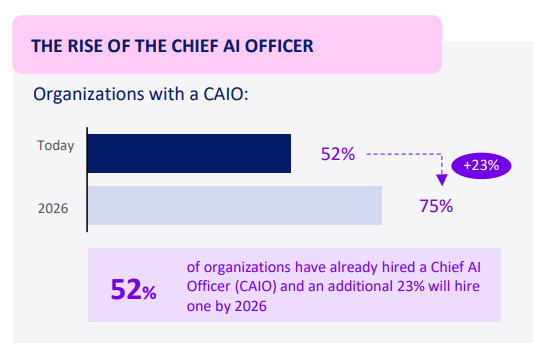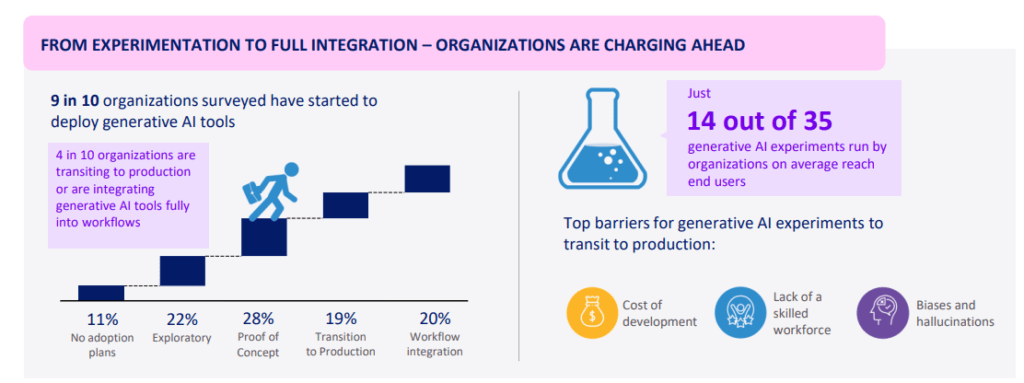A new AWS survey reveals Canadian organizations are rapidly investing in generative AI capabilities while facing talent shortages that limit implementation.
Organizations across Canada are prioritizing investments in generative AI and security tools above all other IT spending for 2025, according to a new study by Access Partnership and Amazon Web Services (AWS).
The survey of 424 Canadian IT decision makers found that 42 percent ranked generative AI tools as their top budget priority, while 34 percent prioritized security solutions. Other technology investments like compute (13 percent), storage (6 percent) and physical hardware (4 percent) lagged significantly behind.
Organizations moving rapidly toward AI adoption
The study shows generative AI adoption has gained significant momentum in Canada, with 89 percent of organizations already adopting generative AI tools and 85 percent running experiments with the technology.
Nearly four in ten organizations have moved beyond early stages, with 19 percent transitioning to production and 20 percent achieving workflow integration of generative AI tools.
However, despite conducting an average of 35 generative AI experiments in 2024, organizations expect only 14 of these experiments to move to production in 2025, highlighting implementation challenges.
Chief AI Officers leading the charge
The research indicates a new class of C-suite leaders is emerging to manage AI implementation. More than half (52 percent) of surveyed organizations have already appointed a Chief AI Officer (CAIO) to lead generative AI deployment, while another 23 percent plan to create the position by 2026.

Yet 89 percent of organizations currently lack a change management strategy to help employees navigate a future shaped by generative AI, though this number is expected to decrease to 32 percent by the end of 2026.
Talent gap limiting implementation
The shortage of skilled generative AI professionals remains a significant barrier to moving experiments into production.
To address this challenge, 68 percent of organizations plan to upskill their workforce through training, with half already having developed generative AI training plans and another 18 percent set to develop them by the end of 2025.
Training efforts face several obstacles, including limited understanding of employees’ generative AI skill needs, budget constraints, and lack of knowledge about implementing training programs. This talent gap is driving 87 percent of organizations to hire for roles requiring generative AI skills in 2025.

Hybrid approach to AI implementation
Most Canadian organizations are adopting a blended approach between building and buying generative AI solutions. Only 21 percent plan to develop solutions entirely in-house from scratch in 2025.
Instead, organizations are leveraging pre-existing models: 52 percent plan to build custom applications on out-of-the-box models, 48 percent will build on fine-tuned models, and 35 percent will deploy out-of-the-box applications wholesale.
The report highlights that partnership between internal teams and external vendors will be crucial, with 71 percent of organizations relying on third-party vendors to some degree—19 percent fully dependent on vendors and 52 percent using a mix of external vendors and in-house teams.







